Microsoft Surface Pro 8 for Business review: Surprisingly snappy
A substantial upgrade over the Surface Pro 7 and 7+, but quality like this doesn’t come cheap. See if this device is for you in our Surface Pro review
-
+
Superb webcam and rear camera
-
+
Top-quality screen
-
+
Plenty of speed
-
+
Neat and responsive stylus
-
-
Expensive
-
-
Hard to repair
-
-
Mediocre battery life
-
-
Miserly warranty


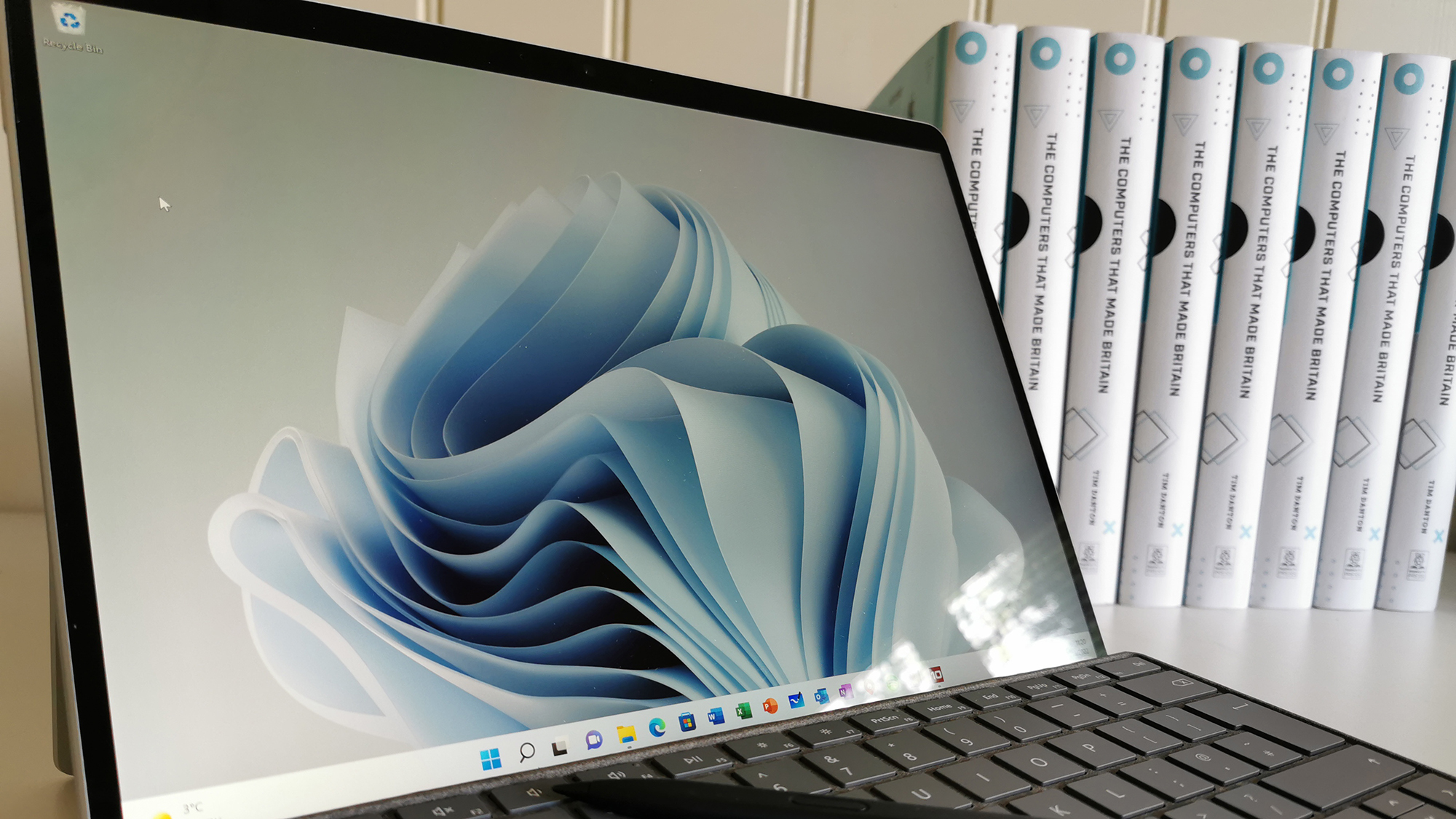

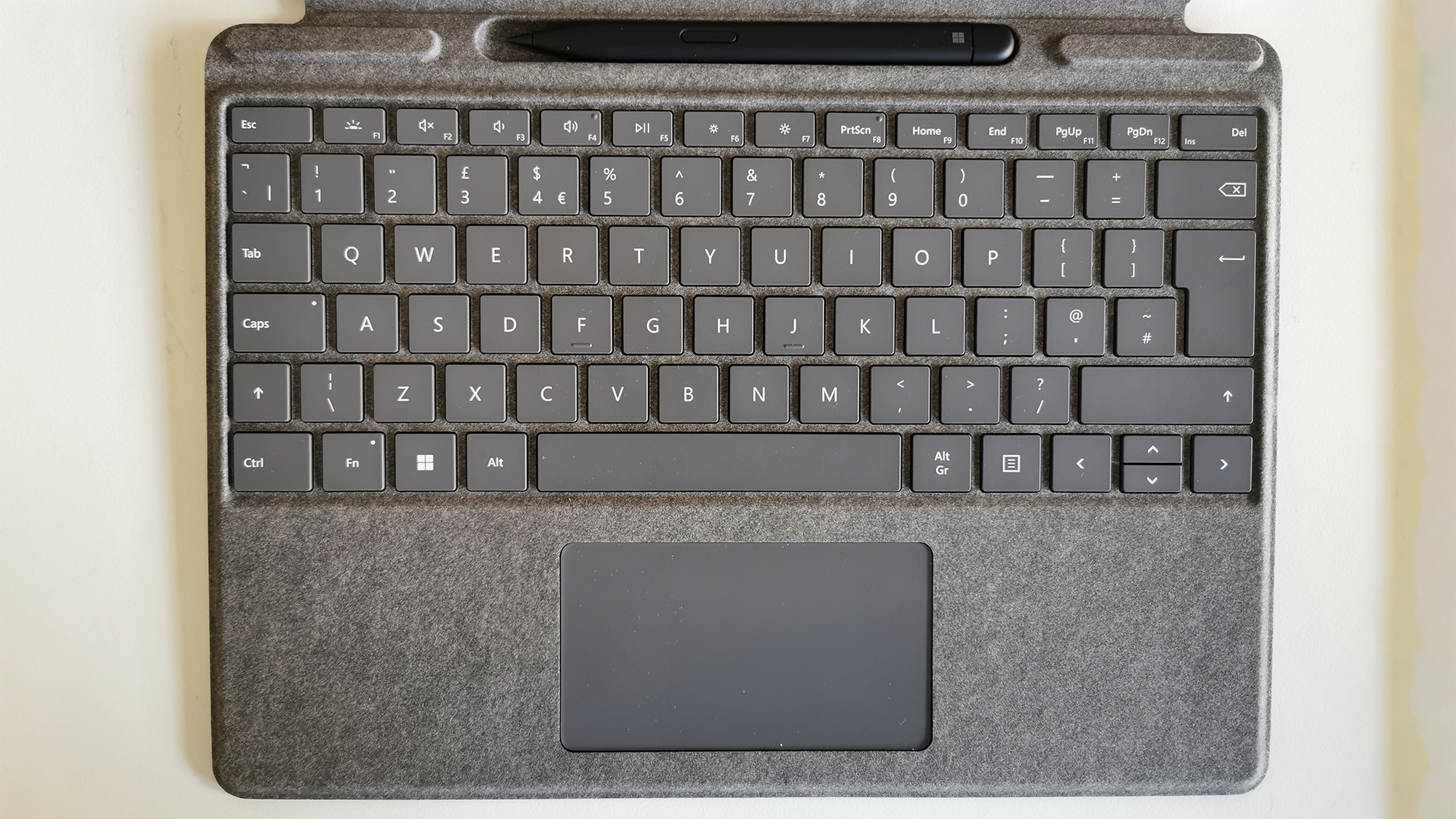
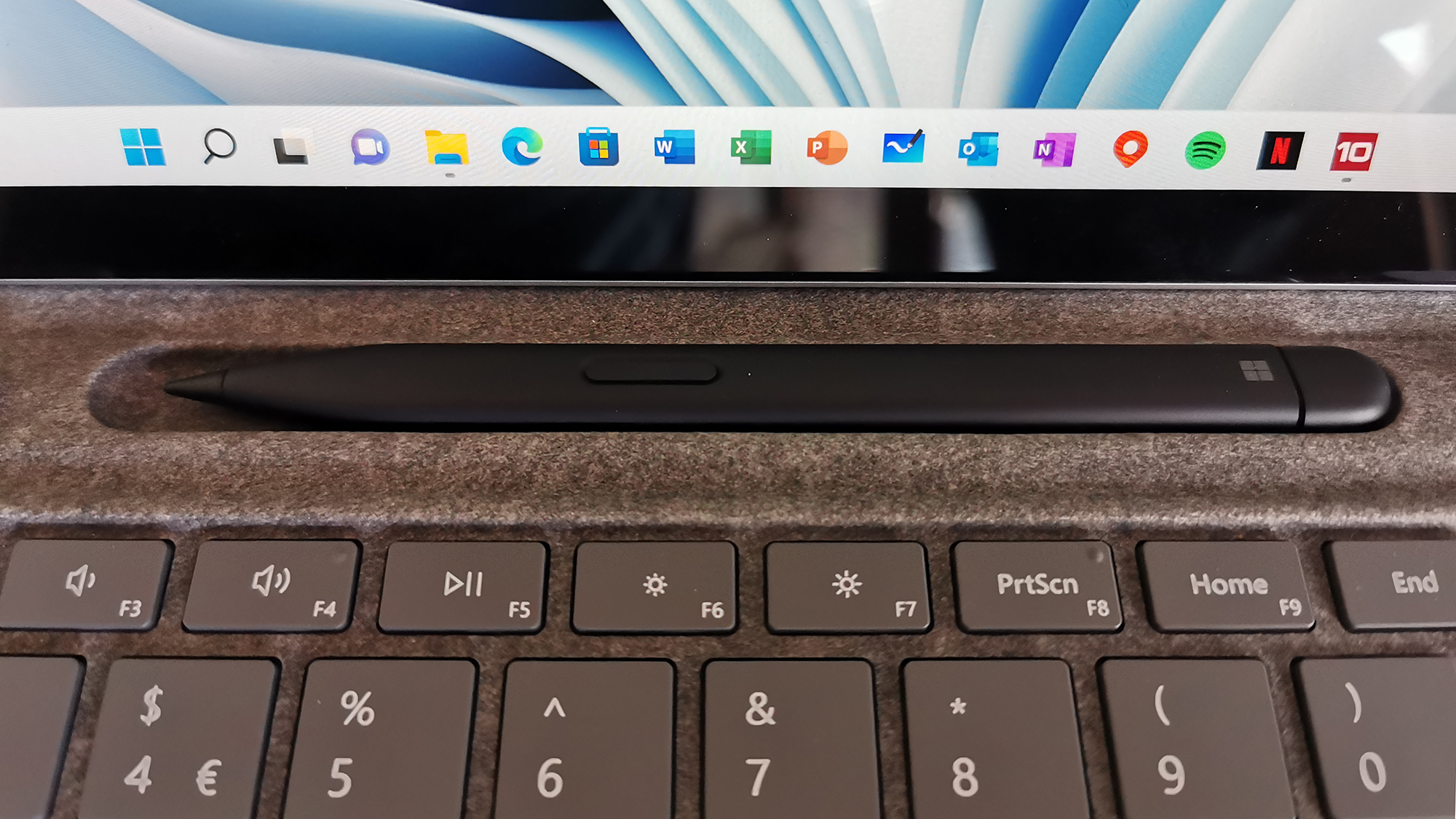
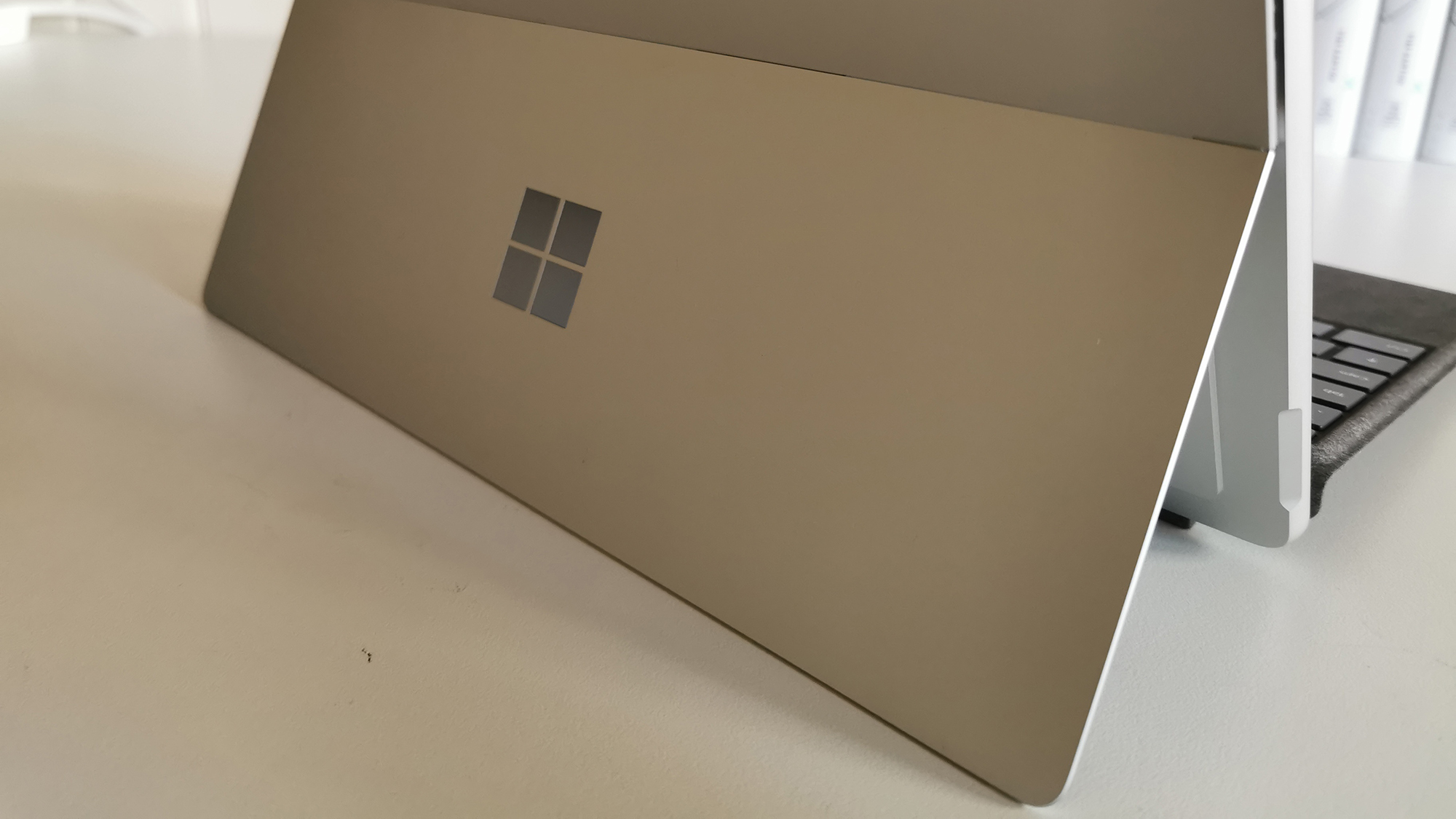
The launch of a new first-party Microsoft device is usually cause for enthusiasm, but that's not always the case when it comes to the Surface range.
We were left underwhelmed by the Surface Pro 7+, which proved to be a minor upgrade on the Surface Pro 7. Faster, thanks to an 11th generation Core processor, but aside from 4G options it brought nothing to make the heart beat faster.
Thankfully, there is much more to say about the Surface Pro 8. While it sticks with 11th gen silicon, it now offers Thunderbolt 4, a bigger screen, and a significantly improved stylus, making it one of the better Windows laptops on the market.
Microsoft Surface Pro 8 review: Design
For the first time in what feels like several years, the design of Microsoft’s flagship ultraportable has been refreshed for this latest model. This new look includes more rounded edges, smaller screen bezels, and a generally sleeker (if slightly less distinctive) silhouette. The Surface Pro’s famous adjustable kickstand is still present and correct, and the machine looks as classy and boardroom-ready as it ever did.
It’s not necessarily a slimline model compared to its predecessor, however. Without the keyboard, the Surface Pro 8 weighs 891g and measures 9.3mm thick, which is in fact 0.6mm thicker and 107g heavier than before. This isn’t necessarily a problem though, and it’s still perfectly portable for taking between meetings or working on the go.
Microsoft Surface Pro 8 review: Display
Thanks to Microsoft’s bezel-shrinking chassis redesign, the Surface Pro 8’s screen is 11% larger than the previous generation, measuring 13in to 12.3in. There are more pixels to enjoy, too, with 2,880 x 1,920 against 2,736 x 1,824, and that results in a pixel density of 267ppi.

You can also switch to a 120Hz refresh rate rather than 60Hz. We didn’t notice much difference in standard Windows applications, but there is an obvious lift in games. You’ll need to manually change the setting in the Display window, but it’s worth visiting here to check out your options. For instance, you can switch between Vivid and sRGB colour profiles, switch off the screen’s adaptive brightness and activate the Adaptive Colour option; this changes the panel’s colour temperature based on the environment, which is better for reducing eye-fatigue but not always desirable.
For testing, we kept the Surface Pro 8 in its default Vivid option but switched off all the automatic options. It covered 99% of the sRGB colour gamut and 77% of the punchier DCI-P3 space, and the end result is a gorgeous image. It helps to have a contrast ratio of 1,350:1 and peak brightness of 432cd/m2, while accuracy is excellent with an average Delta E of 0.6.
Just be aware that it’s a glossy display, and despite the coating Microsoft adds to diffuse reflections from overhead lights, it’s not as office-friendly as a matte panel.
Microsoft Surface Pro 8 review: Keyboard, trackpad and Surface Pen
The Alcantara Signature Type Cover doesn’t offer much in the way of travel or cushioned feel, but is quietly effective and sensibly laid out. Whether you’re a hunt-and-pecker or a touch typist, you should be able to hit the same speed and accuracy as on a normal keyboard. It’s nice to see backlighting, with three levels to choose from, as this is frequently omitted from snap-on keyboards.
The glass-coated touchpad, however, is a little smaller than ideal at 100 x 57mm. If you have big hands, you may struggle to use any four-finger gestures, but we suspect this restriction won’t hinder many people.

Then we come to the Surface Slim Pen 2. This dinky little thing charges wirelessly while in its hiding place, nestled within the Signature Cover, and offers 4,096 pressure levels - theoretically enough for the most demanding digital artists.
There isn’t a friction coating on the screen, with Microsoft instead relying on haptics built into the pen. And, to our surprise, this works well. Drawing on-screen felt natural, with unerring accuracy, and it was a joy to use the Slim Pen 2 to annotate PDFs. It can’t match the true feel of pen against paper, but that’s asking too much.
Speaking of which, the fact that Microsoft charges £100 exc VAT for the Slim Pen 2 on its own means it makes far more sense to buy it as a bundle with the Type Cover for £217 exc VAT.
Microsoft Surface Pro 8 review: Specs and hardware
While we were underwhelmed by the Surface Pro 7+’s benchmark score of 91, the Surface Pro 8, provides the sort of performance bump we would expect with a new Microsoft device launch. Speed increased drastically to 118 in our benchmarks, probably since the device has a Core i7-1185G7, 16GB of RAM, and a 256GB SSD.
Despite this score, we wouldn’t necessarily call it a high-performance device. For example, it scored 5,108 in the Geekbench 5's multicore section of our testing, which is significantly behind the M1 MacBook Air’s score of 7,656. However, it competes fairly well against all other Windows ultraportables and we expect it to be a fairly speedy machine for a while when it comes to office-based tasks. Even though you might not consider it to be a rendering giant, it can deliver a good level of graphical performance for simple media tasks through Intel’s Iris XE graphics.

Microsoft Surface Pro 8 review: Battery life
You’ll be pleased to hear that despite the Surface Pro 8’s increased performance over its predecessor, this hasn’t been sacrificed for battery endurance. In our video-rundown trial, we recorded a result of 7hrs 16mins - that's compared to the Pro 7+'s 6hrs 40mins.
We also put it through PCMark’s light-use office test where it survived for a good result of 9hrs 45mins. However, changing the device to 120Hz will hit the battery quite a bit, with total run time dropping to 6hrs 54mins for the video-rundown test and 8hrs 27mins for the PCMark test.
We consider a running time score of greater than eight hours to be more or less ok, but that still leaves us thirsty for more, moreso if you consider the fact that this machine isn’t a thin or light tablet. It has space for a 51.5Wh battery thanks to its increased thickness. We feel that it could be even thicker or heavier to make room to house a bigger battery pack, especially considering that the Microsoft machine is already tricky to hold in one hand because of its weight. When it comes to its charging speed, it’s a little slow as it only supplies 50% charge in 40 minutes, despite the 65W Surface Connect charger being fairly compact.
Microsoft Surface Pro 8 review: Ports and features
You can also charge the Surface Pro via its two USB-C ports, which support USB 4 and Thunderbolt 4. Both standards are extremely welcome, opening up super-quick transfers and the ability to connect external displays - including up to three 10K monitors. The charger provides a USB-A port, which (along with a microSD slot) has been jettisoned from the main chassis in this redesign.
With no microSD card slot, your on-board storage is limited by what you choose at the time of order. The SSD is removable if you have a Torx Plus screwdriver to hand, but you can’t just shove in a third-party SSD as Microsoft says its own rSSDs (the “r” stands for removable) must be used.
This brings us to repairability as a whole, which is far from easy - although at least Microsoft provides a repair guide. You can access the machine’s innards, but we would head to an official repairer rather than attempt this ourselves.

It’s also why Microsoft needs to take a long hard look at the warranty it supplies with its commercial laptops. It’s great that this is advanced exchange, but the basic cover is only for a year. Upgrades are available, either through Microsoft or resellers, but we hope for more at the prices Microsoft charges.
We would steer clear of the cheapest Core i3 version, as that relies on older Intel HD graphics and includes a measly 128GB SSD. It provides a slightly more affordable entry point, but the first spec we would consider is the Core i5 with 8GB of RAM and a 256GB SSD, which costs £983 exc VAT.
The top specification is a Core i7 with 32GB of RAM and a 1TB SSD for £2,116 exc VAT, but the configuration on test plots a sensible mid-course for £1,316 exc VAT. Note that all of those prices include Wi-Fi only (Wi-Fi 6, not the more advanced Wi-Fi 6E). And whilst it would have been great to see 5G, only 4G options are currently available, typically for around £100 extra.
Microsoft has long built excellent cameras into its Surface hardware, and the Surface Pro 8 is no exception. For Teams video calls, you’ll rely on the 5MP front-facing camera, which shoots smooth 1080p video at 30fps. It’s matched by a pair of highly effective Studio Mics, and in combination they make this a superb video conferencing tool.
If you need to take photos then switch to the rear 10MP camera, which includes autofocus for added sharpness. While it can’t match the advanced camera systems on flagship phones, there’s plenty of detail and rich colours. It can even extend to 4K video footage at 30fps, but you’ll notice the lack of optical image stabilisation.
Microsoft Surface Pro 8 review: Verdict
As always, the main question is whether or not the Surface Pro 8 is worth the price of admission. The answer boils down to how much you will use its undeniably attractive skills; it’s easy to rip off the keyboard and use this as a tablet, and the stylus works beautifully on that deluxe screen. Or, if you just want to use it as an ultra-portable laptop, it’s perfectly capable of filling that role.

Performance is strong enough to handle everything the average office-based employee will need to accomplish, although we do have our gripes. We wish the battery life was longer, especially bearing in mind its weight when used as a tablet, and come to that, we wish Windows 11 could hold a candle to iPadOS as a tablet operating system.
However, if you’re a Windows-based business and want maximum flexibility from your devices, then the Surface Pro 8 performs its multiple roles better than convertible rivals. The price sticks in the craw, especially considering the brief warranty and the meaty upsell for the keyboard and stylus, but there’s no arguing with the quality.
Microsoft Surface Pro 8 specifications
| Processor | Intel Core i7-1185G7 |
| RAM | 16GB |
| Graphics adapter | Intel Iris Xe graphics |
| Storage | 256GB SSD |
| Screen size (in) | 13in |
| Screen resolution | 2,880 x 1,920 |
| Screen type | PixelSense display |
| Touchscreen | Yes |
| Memory card slot | No |
| 3.5mm audio jack | Yes |
| Graphics outputs | 2 x USB-C ports with USB 4.0/Thunderbolt 4 |
| Other ports | 1 x Surface Connect port, Surface Type Cover port |
| Webcam | 5 megapixel 1080p front-facing camera |
| Rear camera | 10 megapixel autofocus camera with 4K video |
| Keyboard and stylus | Optional |
| Speakers | 2 x 2W stereo speakers with Dolby Atmos |
| Wi-Fi | Wi-Fi 6 |
| Bluetooth | Bluetooth 5.1 |
| NFC | N/A |
| Dimensions, mm (WDH) | 287 x 208 x 9.3 mm (14mm thick with Signature keyboard) |
| Weight (kg) - with keyboard where applicable | 891g (1.17kg with Signature keyboard) |
| Battery size (Wh) | 51.5Wh |
| Operating system | Windows 11 Pro |
| Warranty | 1yr limited hardware |
Get the ITPro daily newsletter
Sign up today and you will receive a free copy of our Future Focus 2025 report - the leading guidance on AI, cybersecurity and other IT challenges as per 700+ senior executives
Tim Danton is editor-in-chief of PC Pro, the UK's biggest selling IT monthly magazine. He specialises in reviews of laptops, desktop PCs and monitors, and is also author of a book called The Computers That Made Britain.
You can contact Tim directly at editor@pcpro.co.uk.
-
 LockBit ransomware group falls victim to hackers itself
LockBit ransomware group falls victim to hackers itselfNews A data leak has revealed negotiations with victims, along with Bitcoin wallet addresses, affiliate accounts and details of attacks
By Emma Woollacott Published
-
 AI-powered banking fraud on the rise – but financial institutions are fighting back
AI-powered banking fraud on the rise – but financial institutions are fighting backNews Banks are increasingly using AI to combat scams, but say that the need for good data management can make progress slow
By Emma Woollacott Published
-
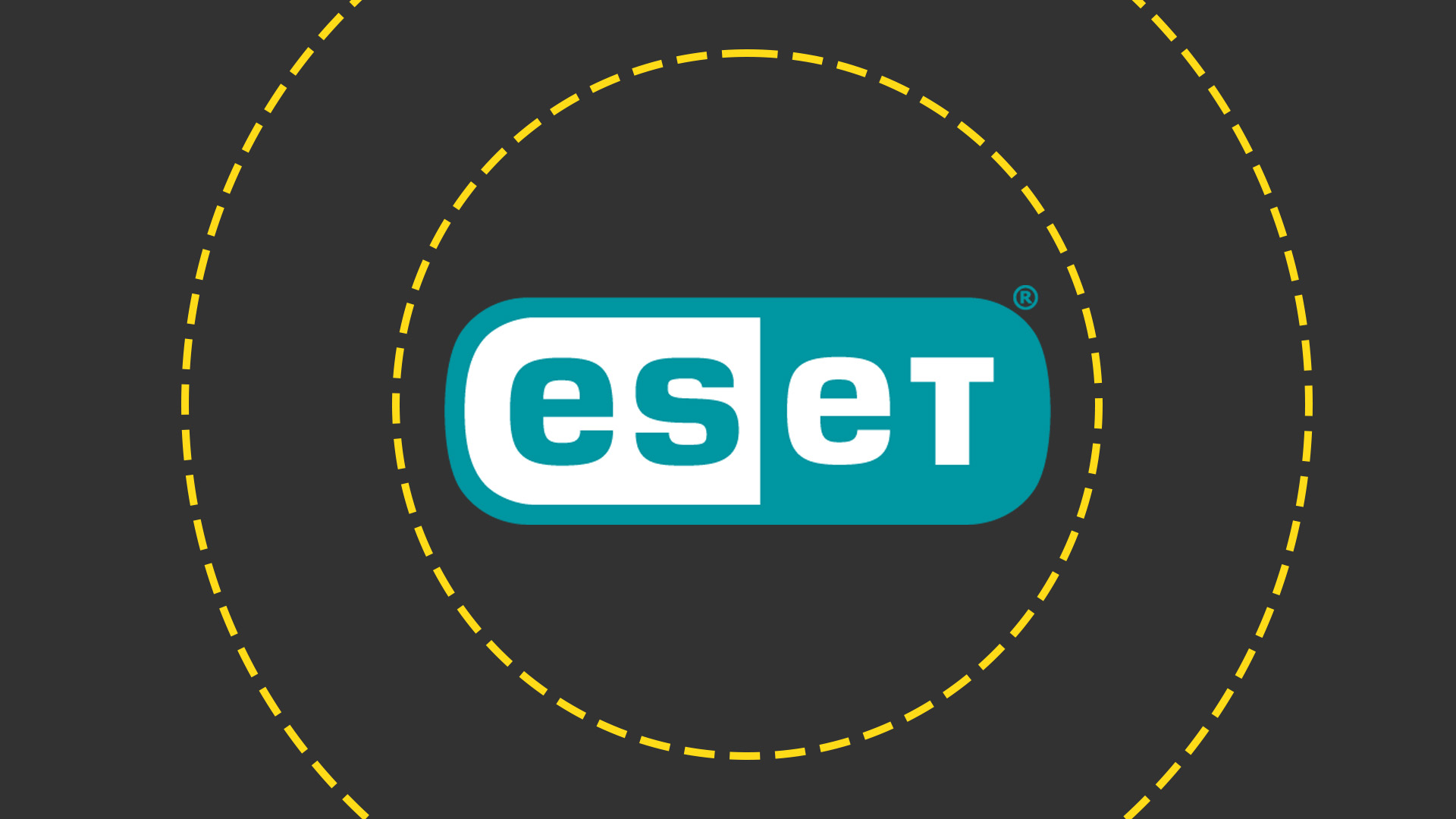 ESET targets partner profitability with new MDR bundle
ESET targets partner profitability with new MDR bundleNews The security firm's managed detection and response services and products are now available as part of a single SKU to enhance the partner sales process
By Daniel Todd Published